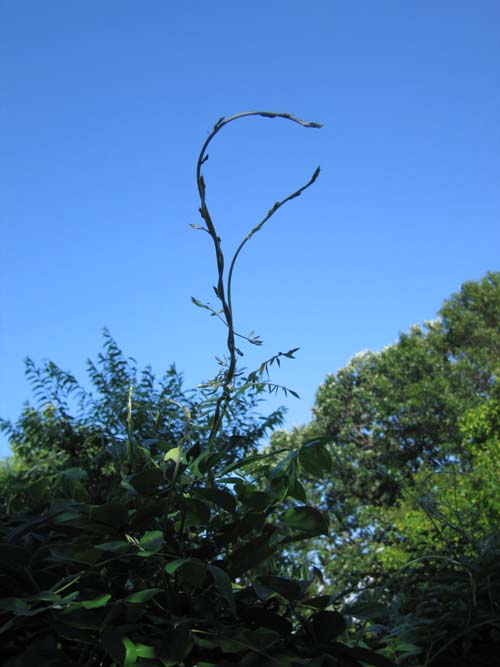67 bar steady 29.97 0mph NNW dew-point 58 sunrise 6:04 sunset 8:34 Lughnasa
Waxing Crescent of the Corn Moon
Last night I stood outside for a while and listened to the wind rustle the leaves of the poplars and oaks, an invisible hand caressing these giants. Tonight stars dot the sky and the air is quiet, the temperature a cool 66 (dropped a temp since I added the info. bar above.) These nights, summer nights, have stories that reach back in time, memories of cars pulling into neon lit drive-ins, dances in school gymnasiums and midnight rides through the countryside seeking bliss. A special place, the summer night.
Heresy Moves West will have two parts, I see no other way unless I perform drastic surgery on the introductory material, now seven and a half pages. My plan is to finish the second half, the stories and threads of thought that directly result in the building of liberal congregations in Minnesota. This is, of course, the assignment I originally gave myself, but I did not know then the complex of political, theological, institutional and intellectual lines necessary to make the story comprehensible at anything more than a superficial, potted history level. After I finish part II, then I’ll see what can be done with the whole.
The last piece of the whole considers the future, projecting a possible trajectory for the liberal faith tradition in a time of what I perceive as thinness and altogether too disparate a theological base. Here I will begin to answer the problem I addressed in my late night post August 3rd. Ideas have come to me of late and I have a way to go forward, at least one that makes sense to me.
In the build up to the Olympic Games the History Channel and National Geographic have run programs on Qin Shi Huang Di, the unifier and first emperor of China (Qina). His story makes for conflicted reading or watching since he brought the dreadful warring states period to an end by subduing the seven larger states that had survived. He also standardized weights and measures, the width of axels, coinage, language and law. As Chinese history developed after him, both the unification and these measures of standardization contributed to China’s long continuity in culture. In these ways he is the father of China.
He was, however, a cruel man who killed millions to achieve peace. He killed at least a million more building the Great Wall and at least hundreds of thousands building his mausoleum. The legal system he instituted was draconian and ran against the grain of the Confucian thought world that preceded him. His dynasty lasted only one generation beyond his and even that, from his perspective was a failure since he spent the last years of his life in a desperate search for an elixir of immortality.

